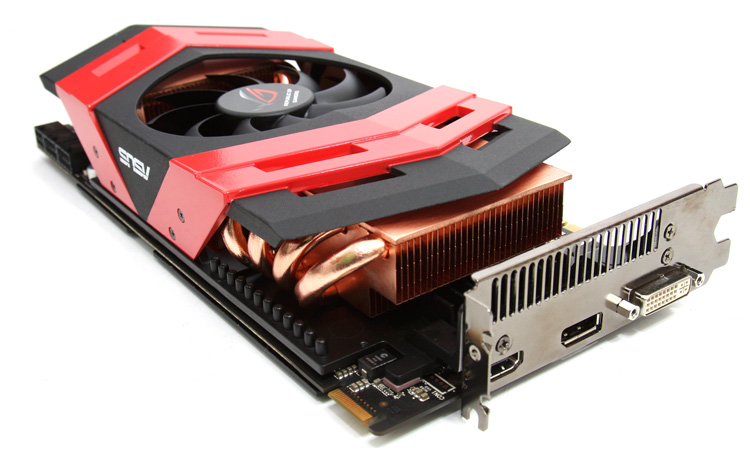RV870 + RV870
Twice the fun ...
RV870 + RV870 = R800 = ASUS ARES. This math is the reality. RV870 is the GPU empowering what you know as the Radeon HD 5870. A Radeon HD 5970 graphics card really is a what you know as the Radeon HD 5870 X2 e.g. two RV870 + RV870 mounted on one PCB. ASUS took their own design, applied several tweaks, made it faster and applied more memory. But let's talk about the RV870 GPU for a second.
Transistor count for example. The number of transistors always works as an indicator of how powerful a product will be. For example, the Radeon HD 4870 which we all know and love for its performance had 956 million transistors embedded onto that die. The RV870 GPUs have 2.15 billion transistors. Correct, that is 2150 million transistors tucked away in a small chip the size of the tip of you finger.
Each RV870 GPU on the ASUS ARES will have the full 1600 shader processors available (also called stream processors). The number of ROPs went up from last gen's 16 to 32 and the texture count is 80. So one GPU is already staggering when it comes to performance -- you now have two, which are faster clocked than a Radeon HD 5970 and armed with double the memory.
So ASUS placed two RV870 chips onto their own design PCB. In-between the two chips, is a bridge chip (PLX) allowing direct communication in-between them. So while this card is marketed as a 'single' graphics card, the reality however is that the two GPUs are bridged and then kicked-in into Crossfire mode -- Multi GPU gaming. The ARES is also marketed as 4GB model -- well, to date two GPUs can't share a framebuffer, so the reality here is that each RV870 GPU has a 2GB memory partition.
| Radeon HD 4870 | Radeon HD 5870 | Radeon HD 5970 |
ASUS ARES | |
| Process | 55nm | 40nm | 40nm | 40nm |
| Transistors | 956M | 2.15B | 4.3B | 4.3B |
| Die Size | 263 mm² | 334 mm² | 334 mm² | 334 mm² |
| Core Clock | 750 MHz | 850 MHz | 725 MHz | 850 |
| Shader Processors | 800 | 1600 | 3200 | 3200 |
| Compute Performance | 1.2 TFLOPs | 2.72 TFLOPs | 4.64 TFLOPs | 5,44 |
| Texture Units | 40 | 80 | 160 | 160 |
| Texture Fillrate | 30.0 GTexels/s | 68.0 GTexels/s | 116.0 GTexels/s | 136 GTexels/s |
| ROPs | 16 | 32 | 64 | 64 |
| Z/Stencil | 48.0 GSamples/s | 108.8 GSamples/s | 185.6 GSamples/s | 217 GSamples/s |
| Memory Type | GDDR5 | GDDR5 | GDDR5 | GDDR5 |
| Memory Clock | 900 MHz | 1200 MHz | 1000 MHz | 1200 MHz |
| Memory Data Rate | 3.6 Gbps | 4.8 Gbps | 4.0 Gbps | 4.8 Gbps |
| Memory Bandwidth | 115.2 GB/s | 153.6GB/s | 256.0 GB/s | 307,2 GB/s |
| Maximum Board Power (TDP) | 160W | 188W | 294W | 349W |
| Idle Board Power | 90W | 27W | 42W | 44W |
Comparing apples to oranges -- So the Radeon 5970 got a clock frequency at 725 MHz with it's total of 3200 (!) stream/shader processors. The memory is clocked at 4800 MHz effective(gDDR5). For ARES that boils down to 850 MHz on the GPU and 1200 MHz (4800 MHz effective data rate) on the memory.
Memory wise it's exactly the same dynamic as ATI will be equipping the cards with gDDR5 memory rated at 4000 MHz effective. Due to it's advanced design the card oozes with tweaking potential. Voltage regulation will also be an integral part of that as the card comes with multiple programmable Volterra power regulators.
Yes the ASUS ARES is a true gamer's or enthusiast PC aficionado's wet dream. You'll need a big fat wallet though as this is a limited edition with only a couple of thousand cards build and expected pricing is an extraordinary 1000 EUR.
It's going to be difficult to justify this product though, as such incredible brute horsepower requires a massive PC and the most complex games to even stress the GPUs 100%, a challenge yes -- but I like to refer to that as purchasing a future proof graphics card.
So when a package arrives here at the test-lab, huge heavy and then when you open it up you find a security suitcase ... then that definitely draws attention. Though there have been a couple of previews out on engineering sample ASUS Ares videocards, we just received one of the limited edition retail samples for a review.
As stated ASUS uses up all available stream processors (2x1600) and then opposed to the 5970 uses faster default clock frequencies and leaves open a lot of room for overclocking.
- Normal R5970 clocks: (725/1000 MHz core/memory)
- ARES clocks: (850/1200 MHz).
The card comes packed with a stunning 4GB of graphics memory (2GB per GPU) and should be able to get some really nice. Anyway, follow me please into the photos shoot slash product gallery.

